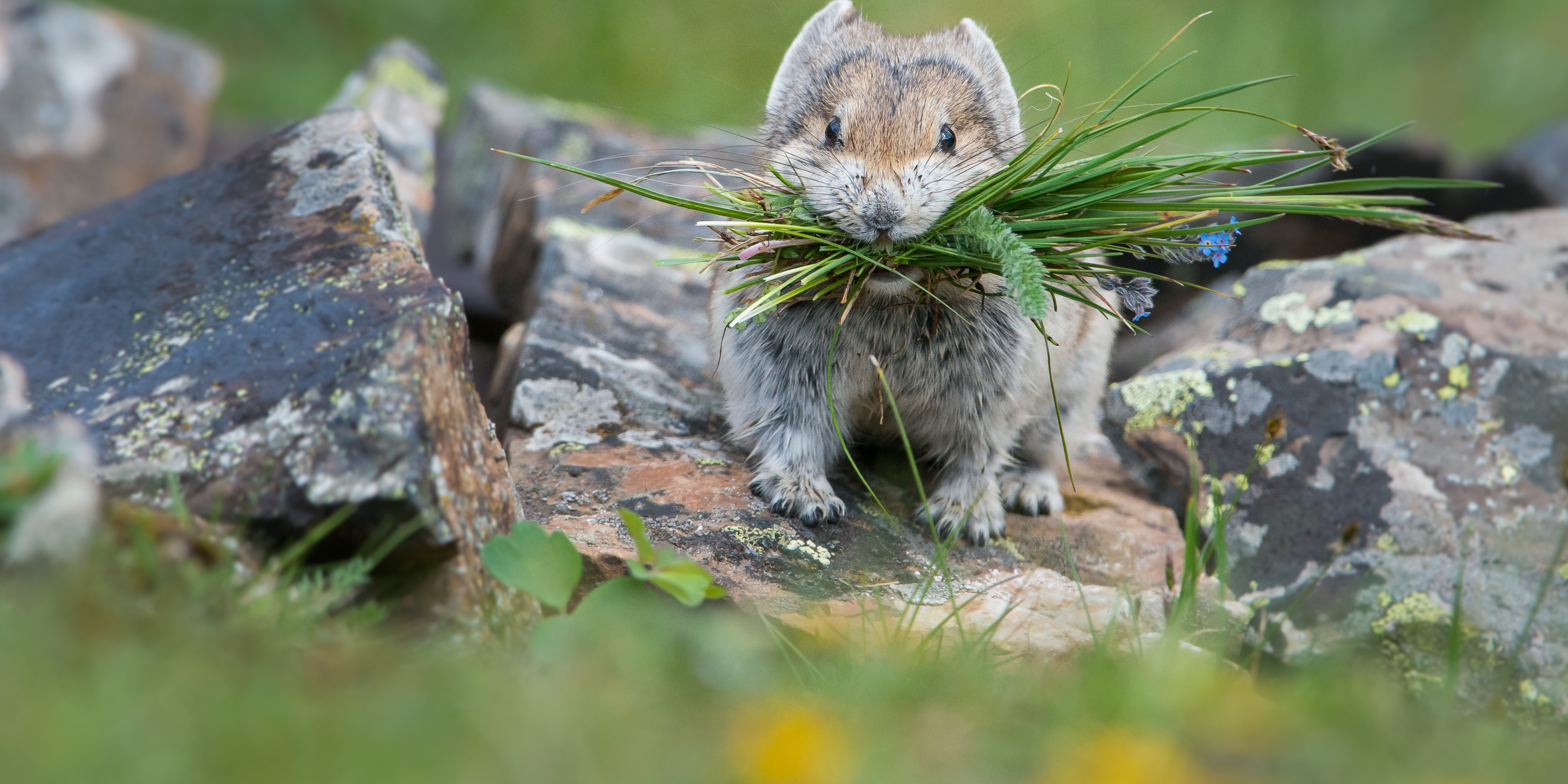Many animals head for lower elevations and warmer climates this time of year. Some gather their winter provisions all summer to survive the long winters of the Sawtooth mountains. These busy mammals are not true hibernators but instead some of the most notorious preppers and adapters within the SNRA. Many can be spotted easily- scurrying about a vacated campsite or darting up a tree. Others work quietly deep within the forest. All prep diligently to build up their storage and sleeping areas for colder months ahead. Their constant foraging provides a little extra insulation (for the tummy and the den).
Pikas
Lagomorpha-rabbits, hares, and pikas are some of the forest’s more adorable creatures. These herbivores feed on a wide variety of plant matter, including forbs, grasses, moss, lichens, and twigs. The American pika (Ochotona princeps) has a special place in many people’s hearts who frequent the Sawtooth National Forest. They resemble their closest relative, the rabbit, -just with shorter, more rounded ears.
They can be found on rocky mountainsides and require colder temperatures for their survival. Rather than hibernate during winter, pikas forage for grasses and other forms of plant matter and stash these findings in protected dens in a process called haying. This will sustain them during the long winter season.
Porcupines
Rodentia (rodents)
This is the largest order of mammals and most are herbivores, feeding on plant material – seeds, stems, leaves, flowers, and roots. Some are omnivores and even fewer are predators. The most common ones found in the Sawtooth National Recreation Area include squirrels, rats, mice, beavers, chipmunks, and marmots.
One especially interesting rodent that isn’t quite like the others is the North American Porcupine (Erethizon dorsatum). This nocturnal mammal pretty much keeps to itself- except during mating season, and may den with other porcupines in the winter. Dens can be located inside caves, large rock piles, decaying logs, and hollowed-out trees. While it will stay in its den during bad weather, it does not hibernate. During the summer, they eat twigs, roots, stems, berries, leaves, and other vegetation. Porcupines also eat certain insects and nuts. During the Sawtooth winters, they mainly eat conifer needles and tree bark. They are commonly found in coniferous and mixed forested areas but have adapted to harsh environments such as shrublands and tundra.
Wolverines
The Mustelidae are a family of carnivorous mammals that inhabit the SNRA. Weasels, badgers, otters, martens, and minks (to name a few) are happily residing within the Sawtooth forest. These creatures are more closely related to other members of Carnivora, like dogs, cats, and bears. While the majority are meat eaters, some are also herbivores.
The most elusive and rarely sighted Mustelidae is the wolverine (Gulo gulo). These mammals are primarily scavengers. Their diet is from carrion, on which it depends almost exclusively. Wolverines may find carrion themselves, feed on it after the predator has finished, or take it from another predator. They have adapted to withstand the intense winter environment with dense fur, large snowshoe-like paws, and claws that allow them to climb steep, rocky, snow-covered peaks. They have cozy dens where females will have 2-3 cubs by late winter/early spring.
Resist the hand-out
Please remember, while it can be tempting to offer human food to these creatures (and others not mentioned) during the winter season, their systems are sensitive to our human diets. Please know they have done their best all year to provide for themselves the best way they know how.




